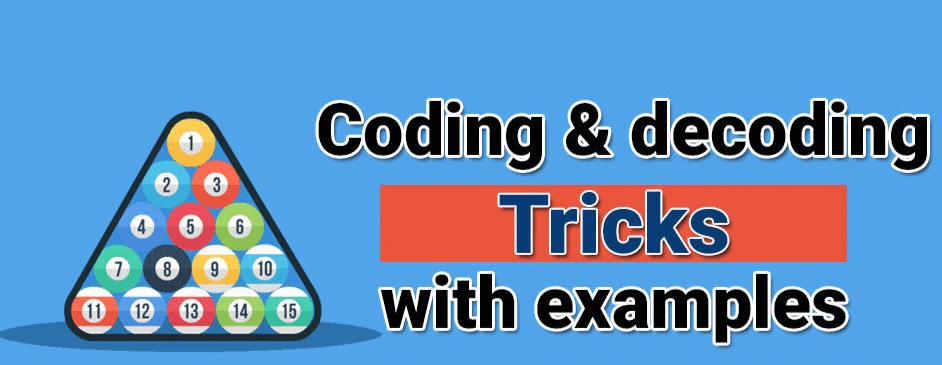Cheatsheet: Coding & Decoding | General Aptitude for GATE - Mechanical Engineering PDF Download
| Table of contents |

|
| Introduction |

|
| Theory |

|
| Types of Coding-Decoding |

|
| Tips |

|
Introduction
Coding and Decoding are essential concepts in logical reasoning, commonly featured in competitive exams. Coding involves the process of converting a message into a secret code to ensure its confidentiality, while decoding is the process of breaking down this code to retrieve the original message. These types of problems test a candidate’s ability to recognize patterns, apply logical reasoning, and think analytically. They are widely used to assess mental agility, intelligence, and problem-solving abilities.
Theory
In coding-decoding questions, numbers, letters, or symbols are used to represent messages. The code could be based on various principles, including alphabetical shifts, numerical patterns, or other forms of encryption. The primary goal is to identify the pattern being used and apply it correctly to decode the message or determine the next term in a sequence. Such questions might involve simple letter-to-number substitutions, shifts in the alphabet, or complex encoding techniques.
Types of Coding-Decoding
Alphabetical Shifting
In this type, each letter in the message is replaced by another letter based on a shift in its position in the alphabet. This shift could be forward or backward.
Example: If the shift is +3, A becomes D, B becomes E, and so on.
Number-to-Alphabet Coding
Each letter of the alphabet is assigned a numerical value (A=1, B=2, ..., Z=26), and the code is formed by converting letters into numbers.
Example: CODE would become 3-15-4-5.
Reverse Coding
In reverse coding, the alphabet is written in reverse order (Z = 1, Y = 2, ..., A = 26), and letters are replaced by their corresponding values in the reverse order.
Example: If Z = 1, then A = 26.
Substitution Coding
In this method, one set of characters (letters, numbers, or symbols) is substituted with another set according to a predefined pattern or rule.
Example: A becomes X, B becomes Y, and C becomes Z in a specific pattern.
Pattern-Based Coding
These problems involve identifying a specific pattern or rule that is applied to the letters or numbers in the sequence, such as alternating between operations (addition, subtraction, etc.).
Example: Each alternate letter in a word is shifted forward by one position.
Tips
Numerical Value of Alphabets: Memorize the position of each letter in the English alphabet, as it is often used in coding-decoding problems. For example, A = 1, B = 2, ..., Z = 26.
Cyclical Nature of Alphabets: The alphabet's numbering system is cyclical, meaning after Z (26), the sequence starts again at A (1). This helps when the code involves shifting past Z.
Example: If A (value = 1) changes by +3, it becomes D (value = 4). Similarly, Z (value = 26) can change to C (value = 3) if the shift exceeds 26.
Practice Letter Shifts: Get comfortable with both forward and backward shifts of the alphabet, as they form the basis of many coding-decoding questions.
Identify Patterns: Look for repeating patterns or cycles within the series of numbers or letters. This can help predict the next number or letter in the sequence.
Work Systematically: When solving these problems, follow each step carefully. Break down the message into smaller parts, identify the rule being used, and apply it step by step.
Use Substitution and Elimination: In more complex problems, sometimes eliminating incorrect choices based on the rule can quickly lead you to the correct answer.
|
206 videos|190 docs|158 tests
|
FAQs on Cheatsheet: Coding & Decoding - General Aptitude for GATE - Mechanical Engineering
| 1. What is coding and decoding in the context of banking exams? |  |
| 2. Why is coding and decoding important in banking exams? |  |
| 3. What are some common coding and decoding techniques used in banking exams? |  |
| 4. How are coding and decoding skills assessed in banking exams? |  |
| 5. How can I improve my coding and decoding skills for banking exams? |  |




















